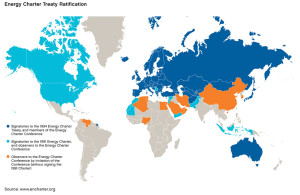European Union (EU) investors can bring investment claims against another EU Member State under the Energy Charter Treaty (ECT). This is the finding of the SCC arbitral tribunal in the Charanne v. Spain case (Award of 21 January 2016). This award clarifies uncertainties regarding intra-EU investment-states dispute settlement (ISDS) arising under the ECT.
Claimants, two companies incorporated in Luxembourg and Netherlands, made an investment in solar power industry in Spain. In the context of the European debt crisis, Spain had to revise its incentive policy for investments in renewable energy. Consequently, a claim had been brought against Spain by the two EU investors.
Spain argued that the arbitral tribunal lacked jurisdiction over a dispute between a European investors and a EU Member State since the dispute matter was subject to the legal system of the EU. More precisely, Respondent relied on the alleged luck of consent to settle an intra-EU dispute via international arbitration. It put forward three arguments: (i) the parties are not of a different nationality/territory; (ii) intra-EU matters are carved-out from the ECT; and (iii) the ECT dispute resolution mechanism is incompatible with EU law.

EU Parties Are Not of Different Nationalities
Spain argued that the parties to the proceedings are members of the EU, a Regional Organization for Economic Integration, and consequently there was no diversity of territory/nationality as required under Article 26 ECT. In other words, the dispute was not between a contracting party and the national of another contracting party, but between the nationals of the same contracting party, which is the EU.
The tribunal had to decide whether Claimants were to be considered as investors of particular Member States or of EU as one territory. The tribunal decided in favor of the first option. It took into consideration the fact that both the EU and Member States may have legal standing as defendants in an action under the ECT. This is also supported by the fact that the concept of “territory” in Article 1(10) ECT refers to both the territory of a particular Contracting State (Article 1(10) first para.) and EU territory (Article 1(10) second para.). The tribunal explains that the term “territory” in Article 26(1) would mean the EU in the particular case when an investor brings a claim against the EU for its alleged breaches of the ECT. (para. 427-432)
Intra-EU Disputes Are Not Carved Out from the ECT
Spain also argued that the ECT impliedly carved out intra-EU disputes from its application. It made an analogy to Article 27 ECT that allows the Contracting Parties to settle the disputes between them.
The tribunal disagreed with Respondent’s argument. It considered that Article 27 ECT provides for ad hoc arbitration between Contracting Parties, except as otherwise agreed by Parties to the disputes. Article 27 ECT does not apply to the EU Member States. Article 267 TFEU, as interpreted in the MOX plant judgment of the Court of Justice of the European Union (CJEU), prevents the resolution of disputes between Member States from being referred to international arbitration. Article 26 ECT, applicable to this dispute, does not provide for any exception. In addition, no EU rule forbids the Member States from submitting to arbitration disputes between them and investors from other EU Member States. (para. 433-439)
The ECT Dispute Resolution Mechanism Is Compatible with EU Law
Spain further argued that Article 344 TFEU prohibits Member States from resolving conflicts involving EU law via international arbitration. According to Spain, Article 344 TFEU forbids a Member State from being a party to a dispute as long as this implies the interpretation of EU law.
The tribunal considered that Article 344 TFUE concerns disputes between Member States and not between a private party and Member States. Furthermore, the tribunal noted that there is no similar provision to Article 344 TFUE that would forbid the submission of a dispute between a EU investor and a EU Member State before an arbitral tribunal. (para. 440-450)
See: Charanne B.V. and Construction Investments S.A.R.L. v. Spain, SCC No. 062/2012
